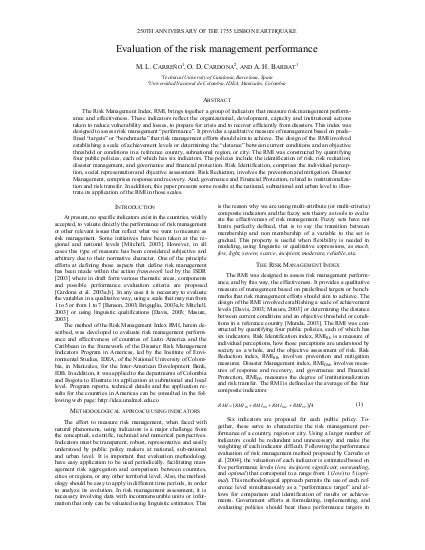
The Risk Management Index, RMI, brings together a group of indicators that measure risk management performance and effectiveness. These indicators reflect the organizational, development, capacity and institutional actions taken to reduce vulnerability and losses, to prepare for crisis and to recover efficiently from disasters. This index was designed to assess risk management “performance”. It provides a qualitative measure of management based on predefined “targets” or “benchmarks” that risk management efforts should aim to achieve. The design of the RMI involved establishing a scale of achievement levels or determining the “distance” between current conditions and an objective threshold or conditions in a reference country, subnational region, or city. The RMI was constructed by quantifying four public policies, each of which has six indicators. The policies include the identification of risk, risk reduction, disaster management, and governance and financial protection. Risk Identification, comprises the individual perception, social representation and objective assessment. Risk Reduction, involves the prevention and mitigation. Disaster Management, comprises response and recovery. And, governance and Financial Protection, related to institutionalization and risk transfer. In addition, this paper presents some results at the national, subnational and urban level to illustrate its application of the RMI in those scales.
Resource collections
- Evaluating humanitarian action
- Monitoring and Evaluation (M&E)
- Monitoring of humanitarian action
- UN Habitat - Urban Response Collection
- Urban Response - Urban Crisis Preparedness and Risk Reduction
- Urban Response Collection - Community Engagement and Social Cohesion
- Urban Response Collection - Economic Recovery
- Urban Response Collection - Environment and Climate Change
- Urban Response Collection - Housing, Land and Property
- Urban Response Collection - Urban Crisis Response, Recovery and Reconstruction
- Urban Response Collection - Urban Resilience
- Use of evaluation evidence